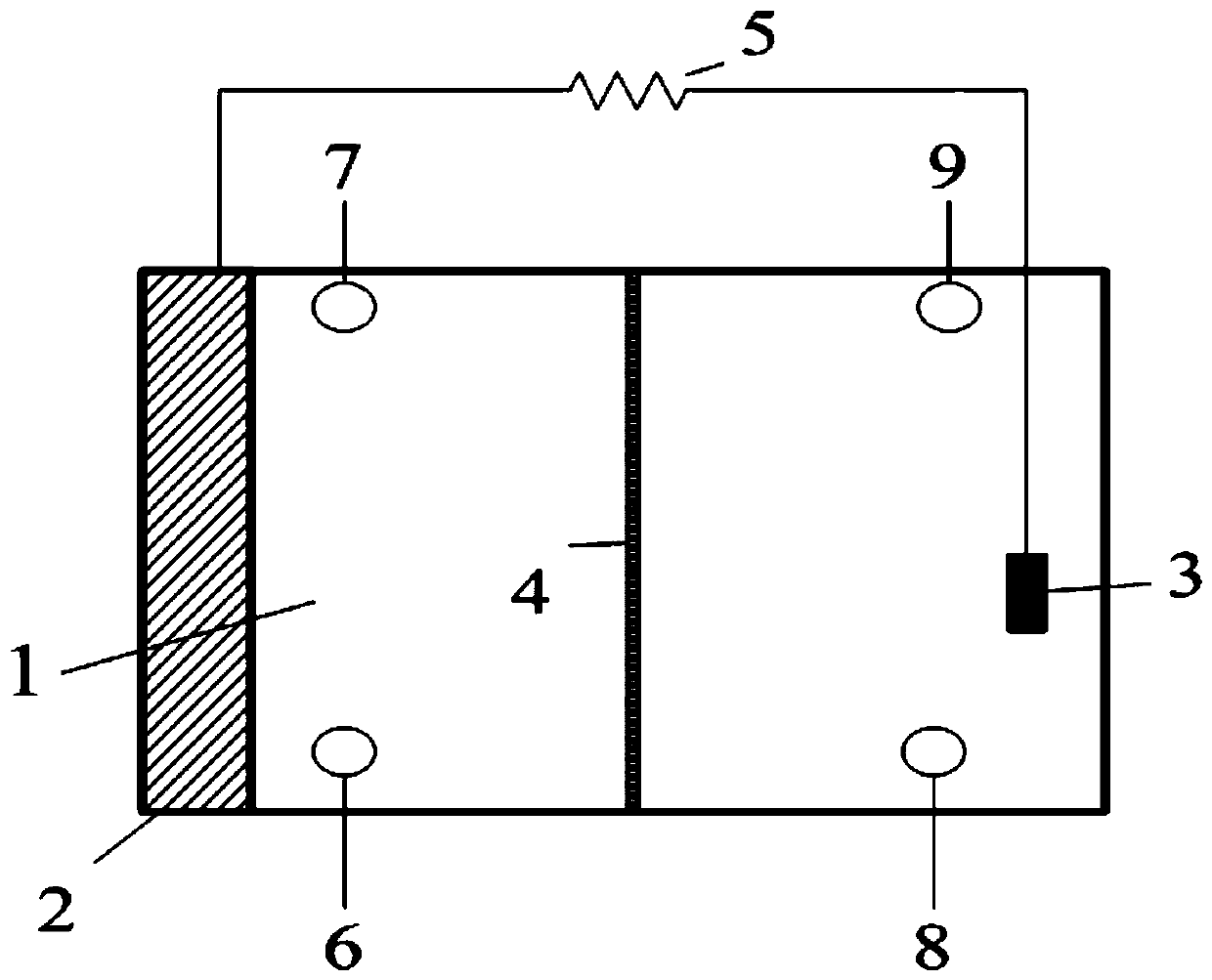A bioelectrochemical h 2 o 2 Sensors and their use to detect h 2 o 2 Methods
A bioelectrochemical and H2O2 technology, applied in the field of pollution detection, can solve problems such as difficult to use, increase the cost of sensor construction and use, and difficulties in practical application, and achieve the effects of wide detection range, low construction and use costs, and low cost
- Summary
- Abstract
- Description
- Claims
- Application Information
AI Technical Summary
Problems solved by technology
Method used
Image
Examples
Embodiment 1
[0033] A bioelectrochemical H 2 o 2 sensors such as figure 1 As shown, the bioelectrochemical H 2 o 2 The sensor includes a sensor housing 1, a biological anode 2, an electrochemical cathode 3, a cation exchange membrane 4, and an external load 5;
[0034] The cation exchange membrane 4 is arranged in the sensor housing 1, and the sensor housing 1 is divided into an anode chamber and a cathode chamber;
[0035] The bioanode 2 is a carbon fiber brush, and the pretreatment method of the bioanode 2 is: firstly, it is cleaned with isopropanol, then heat-treated at 450°C for 60 minutes, and then operated in a microbial fuel cell for 3 months to fully enrich and generate electricity Microorganisms form an electrochemically active biofilm to obtain stable anode electricity generation performance, and the electrons generated by the anode are transferred to the surface of the cathode through an external circuit to participate in the H 2 o 2 Catalytic reduction reaction to form an...
Embodiment 2
[0039] A kind of utilizing the sensor described in embodiment 1 to detect H 2 o 2 The method, described method comprises the steps:
[0040] H was injected into the cathode chamber and the anode chamber with known different concentrations at the same flow rate through a peristaltic pump. 2 o 2 Solution and anolyte, wherein, the flow rate is 5mL / min, and the anolyte is a solution containing sodium acetate and glucose;
[0041] Connect the circuit, use the data acquisition instrument to record the sensor current response output value, and obtain the current response and H 2 o 2Concentration-related standard curve, the linear response fitting equation is: I (mA) = 1.0952 + 0.1984lnC (mmol L -1 ), correlation coefficient (R 2 ) is 0.9969, and the detection sensitivity is 198.4μAmM -1 ;
[0042] According to containing H 2 o 2 The response current value measured by the sample to be tested is compared with the standard curve to obtain H 2 o 2 concentration.
PUM
| Property | Measurement | Unit |
|---|---|---|
| electrical resistance | aaaaa | aaaaa |
Abstract
Description
Claims
Application Information
 Login to View More
Login to View More - R&D
- Intellectual Property
- Life Sciences
- Materials
- Tech Scout
- Unparalleled Data Quality
- Higher Quality Content
- 60% Fewer Hallucinations
Browse by: Latest US Patents, China's latest patents, Technical Efficacy Thesaurus, Application Domain, Technology Topic, Popular Technical Reports.
© 2025 PatSnap. All rights reserved.Legal|Privacy policy|Modern Slavery Act Transparency Statement|Sitemap|About US| Contact US: help@patsnap.com

